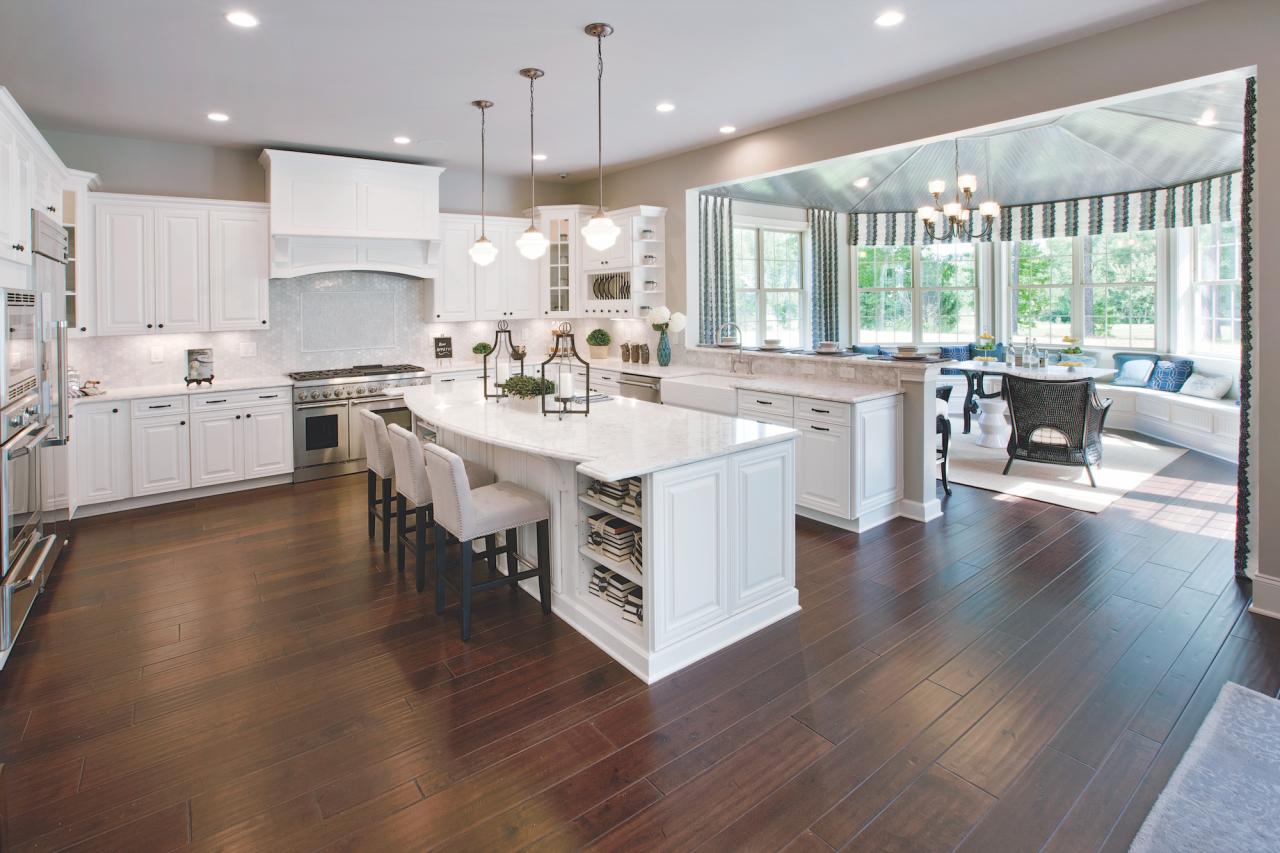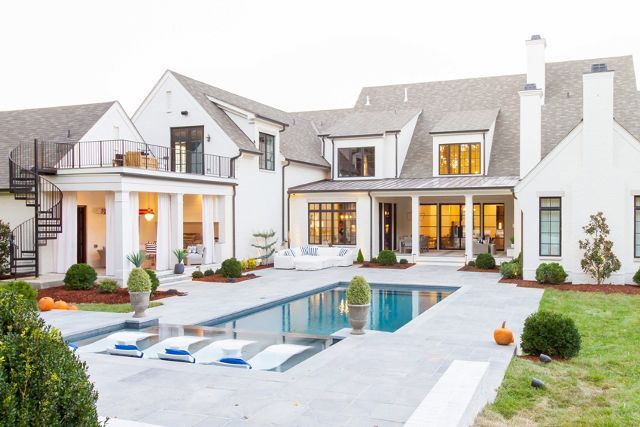The journey to building or renovating your home is a monumental undertaking, filled with countless decisions, from selecting the perfect floor plan to choosing the right color palette. But at its heart, creating a home is a deeply personal and emotional process. It’s about building a space that is more than just a shelter; it’s a sanctuary, a reflection of your personality, and a place where life’s most cherished moments will unfold. For many, the idea of a “dream home” can feel overwhelming, but with the right approach and a clear vision, it is an achievable reality. The key is to move beyond mere aesthetics and focus on a holistic design process that prioritizes functionality, sustainability, and human well-being.
This comprehensive guide will walk you through the essential steps and key considerations for creating your dream home. We’ll delve into the core principles that visionary designers and architects follow, from the initial conceptualization to the final details. Our goal is to provide a detailed, in-depth look at how to approach this journey with clarity, confidence, and a sense of purpose, ensuring that the end result is a home you’ll truly love for a lifetime.
The Foundation of a Clear Vision

Before you draw a single line or select a single material, you must have a clear vision of what you want your home to be. This is the most crucial step, as it will guide every decision you make down the line. A dream home is not a static list of features; it’s a living concept that reflects your values, your lifestyle, and your aspirations.
A. Define Your Lifestyle and Needs: Start by asking yourself some fundamental questions. How do you live? Do you work from home and need a dedicated office? Do you entertain often and require a large kitchen or open-concept living space? Are you a growing family that needs flexible spaces for children? Do you want a quiet, secluded space for meditation or a creative hobby? A detailed analysis of your daily routines and future needs will help you prioritize what is truly important.
B. Create an Inspiration Board: Collect images, articles, and ideas that inspire you. This can be a physical scrapbook or a digital board on platforms like Pinterest. Don’t just focus on the final look; think about what you love about each image. Is it the natural light, the use of a particular material, the seamless indoor-outdoor flow? An inspiration board helps you and your design team understand your aesthetic preferences and the feeling you want the home to evoke.
C. Establish a Realistic Budget: A dream home can quickly turn into a nightmare without a clear and realistic budget. Work with a financial advisor or a trusted builder to establish a budget that includes not only the cost of construction but also the costs of land, architectural fees, permits, and a contingency fund for unexpected expenses. A clear budget allows you to make informed decisions and prevents you from overextending yourself financially.
D. Find the Right Design Team: Your architect or designer is your partner on this journey. Look for someone who has a style that aligns with your vision, but more importantly, someone who listens to your needs and can translate your ideas into a functional and beautiful design. Check their past work and speak to their previous clients. The right team can make the process smooth and enjoyable, while the wrong one can lead to stress and disappointment.
The Art of Intelligent Space Planning
Once the vision is clear, the next step is to translate it into a functional and intelligent space plan. This is where a house becomes a home, with a layout that supports your lifestyle and enhances your daily routine.
A. Seamless Indoor-Outdoor Flow: Modern homes are designed to connect with their surroundings. Your plan should prioritize this through features like large sliding glass doors, floor-to-ceiling windows, and private courtyards or patios that serve as extensions of the living space. This connection to nature not only enhances the aesthetic appeal but also has a proven positive impact on mental and physical well-being.
B. Multi-Functional and Adaptable Spaces: A well-designed home is a flexible home. Your plan should include multi-functional spaces that can be easily transformed to suit different needs. A guest room might double as a home office or a gym, while a dining room could serve as a creative workspace. This is achieved through clever design elements like modular furniture, concealed storage, and a layout that allows for easy reconfiguration without major renovations. This adaptability ensures the home remains relevant for years to come.
C. Strategic Use of Light: For a design expert, natural and artificial light is a fundamental building material. Your plan should maximize daylight through features like skylights, light wells, and strategic window placement. It should also include a plan for a sophisticated lighting system that can be programmed to create different moods and highlight specific architectural features. This use of light can make a space feel larger, more inviting, and more dynamic.
D. Thoughtful Storage Solutions: A home that is free of clutter is a home that is free of stress. Your plan should prioritize smart, integrated storage solutions that are both beautiful and highly functional. This can include built-in shelving, hidden closets, and multi-functional furniture with concealed storage. A well-organized home makes daily life easier and more enjoyable.
The Integration of Technology and Sustainability

A dream home is a future-proof home. It is a space that is not only beautiful but also intelligent, efficient, and environmentally responsible. The most forward-thinking designs seamlessly blend technology and sustainability, creating a home that is a living partner.
A. Holistic Smart Home Systems: A great home plan includes a centralized home automation system that controls everything from lighting and climate to security and entertainment. This isn’t about a collection of disjointed gadgets; it’s a single, cohesive network that operates in a harmonious, intuitive fashion. This system can learn your habits and anticipate your needs, providing a new level of comfort and convenience.
B. Passive Design and Energy Efficiency: Sustainability starts with the design itself. Your plan should prioritize passive solar principles to maximize natural heating and cooling, as well as features for natural ventilation. It should also specify superior insulation and high-performance windows to create a highly energy-efficient building envelope. This reduces your carbon footprint and leads to massive savings on utility bills.
C. Eco-Conscious Material Selection: The choice of building materials is a key indicator of a home’s sustainability. Your plan should specify materials that are responsibly sourced, have a low environmental impact, and can be reused or recycled. This can include reclaimed wood, eco-friendly concrete mixes, and cross-laminated timber (CLT). These materials not only reduce environmental impact but also often possess a unique aesthetic and a story that adds to a home’s character.
D. Water and Energy Conservation: A truly modern home is designed to conserve resources. Your plan should include provisions for rainwater harvesting systems that collect and filter water for irrigation and non-potable use, as well as a plan for a sophisticated lighting system that can be programmed to save energy. It should also be pre-wired for future technologies like an electric vehicle (EV) charging station and solar panels, ensuring the home can adapt to new technologies without costly retrofitting.
The Pursuit of Personalization and Wellness
The final and most crucial step in creating your dream home is infusing it with a sense of personality and a focus on wellness. A home should be a reflection of you and a sanctuary that nurtures your body and soul.
A. Artisanal Craftsmanship and Unique Details: In an age of mass-produced goods, true luxury lies in the bespoke and the handcrafted. Incorporate artisanal elements into your plan, such as custom-milled cabinetry, a unique hand-forged railing, or a custom-designed fireplace. These details make your home truly one-of-a-kind and a powerful statement of your personal style.
B. The Integration of Biophilic Design: This is the practice of incorporating nature into the built environment. Your plan should include elements like a living wall, an indoor garden, or a small courtyard to create a seamless connection with the natural world. Biophilic design has been shown to reduce stress, improve well-being, and increase productivity, making it an essential element of modern, human-centric design.
C. Creating Private Sanctuaries: While open-concept living is popular, a dream home also includes private, secluded spaces for relaxation and rejuvenation. This could be a quiet reading nook, a soundproof home office, or a tranquil master suite with a spa-like bathroom. These spaces are essential for providing a much-needed escape from the stresses of daily life.
D. A Focus on Experience Over Extravagance: The ultimate luxury in a home is the experience it provides. The most successful designs are those that evoke a sense of calm, comfort, and joy. The value is placed on the feeling the home creates—a sense of peace and harmony—rather than its sheer size or the cost of its finishes. The goal is to design a home that is a joy to live in, with every detail contributing to a sense of well-being and purpose.
Conclusion
Creating your dream home is a deeply personal and rewarding journey. It is a process that goes far beyond selecting finishes and furniture; it’s about a thoughtful and deliberate approach to design that prioritizes your lifestyle, your values, and your well-being. By embracing the principles of intelligent space planning, seamless indoor-outdoor living, and a fusion of sustainability and technology, you can create a home that is not just beautiful but also profoundly purposeful.
The most successful dream homes are those that are a true reflection of their owners, with every element meticulously crafted to meet their specific needs and desires. They are a testament to the idea that a home can be more than a place to live; it can be a living partner that supports our well-being, a resilient structure that respects the environment, and a timeless work of art that reflects our journey. By treating the process with care, foresight, and a clear vision, you can ensure that the home you create is not just a dream, but a beautiful and enduring reality that will enrich your life for a lifetime.









